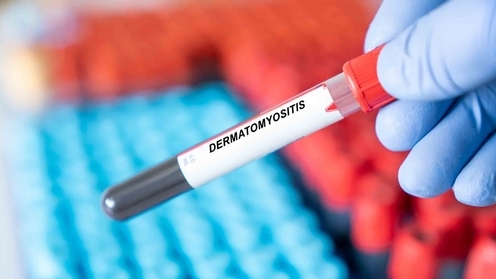Dermatomyositis is a rare inflammatory disease that impacts both the skin and muscles. Its main characteristics include muscle weakness and a unique skin rash, often seen on the face and knuckles. Early identification can help manage symptoms and enhance quality of life.

Understanding Dermatomyositis¹
Dermatomyositis is an inflammatory disorder that primarily affects the muscles and skin. While the exact cause remains unclear, it is believed to involve an autoimmune response, where the immune system mistakenly attacks healthy tissue. Some researchers suggest that certain infections or cancers could trigger this condition in predisposed individuals.
Although there is no cure for dermatomyositis, prompt treatment can help control symptoms. Common approaches include medication, physical therapy, and regular health monitoring. Recognizing the signs and symptoms early can enable individuals to seek help before the condition progresses.
Muscle Weakness: A Core Symptom
One of the most prevalent signs of dermatomyositis is muscle weakness, which generally affects major muscle groups like the shoulders, hips, and thighs. This weakness often develops gradually, leading to challenges with activities such as climbing stairs, rising from a seated position, or lifting arms overhead. If left untreated, the weakness can worsen over time, making daily tasks increasingly difficult.
Muscle weakness typically appears symmetrically on both sides of the body. Early recognition of this symptom is crucial, as untreated weakness may result in muscle atrophy or damage, which can be hard to reverse.
Skin Changes: A Defining Feature
In addition to muscle issues, dermatomyositis often brings about noticeable skin changes. One of the most recognizable signs is a reddish rash that usually appears on the eyelids, face, knuckles, elbows, knees, and chest. This rash may be itchy, painful, or both.
Another common skin symptom is Gottron’s papules, which are raised, scaly bumps found over the knuckles or joints. The skin may also become more sensitive to sunlight, leading to further irritation and redness in exposed areas.
Skin alterations in dermatomyositis can vary from mild to severe and are often among the first indicators that a person may have this condition. If you notice persistent rashes along with muscle weakness, seeking medical advice is essential.
Joint Pain and Swelling
While dermatomyositis primarily affects the muscles and skin, it can also lead to joint issues. Many individuals with this condition experience joint pain and swelling, resembling arthritis, particularly in the hands, wrists, knees, and feet.
Joint pain can range from mild to severe, making movement uncomfortable, and swelling may limit mobility. Though less common than muscle weakness and skin changes, joint pain can indicate the presence of dermatomyositis.
Difficulty Swallowing and Breathing
Another significant symptom of dermatomyositis is difficulty swallowing, known as dysphagia. Weakness in the swallowing muscles can make eating and drinking challenging, potentially leading to unintended weight loss or malnutrition if not addressed.
In more severe cases, dermatomyositis may affect the respiratory muscles, making breathing difficult, particularly during physical exertion. If untreated, this can lead to respiratory failure, a life-threatening condition. Anyone experiencing breathing difficulties should contact a healthcare professional immediately.
Fatigue and Fever
Fatigue is a common symptom among individuals with dermatomyositis. The body’s immune response to inflammation can result in significant tiredness, making it hard to perform daily activities. Many individuals feel fatigued even after adequate rest.
Fever may also accompany dermatomyositis, particularly in the early stages of the disease. While not always present, a fever can indicate that the body is responding to inflammation. If you experience muscle weakness, rashes, and a low-grade fever, it may be time to consult a healthcare provider.
How Is Dermatomyositis Diagnosed?
Diagnosing dermatomyositis can be challenging due to its symptoms resembling other conditions. A physician will typically start with a physical examination and review the patient’s medical history and symptoms. If dermatomyositis is suspected, several tests may be employed to confirm the diagnosis, including blood tests for elevated muscle enzymes, skin or muscle biopsies, and imaging studies like MRI scans. An electromyogram (EMG) may also be used to assess the electrical activity of muscles, helping determine the extent of any muscle damage.
Early diagnosis is vital for effective management of dermatomyositis. The sooner the condition is recognized, the better the chances of controlling symptoms and preventing complications.
Managing Dermatomyositis
While dermatomyositis is a rare and often complex condition, early detection and appropriate treatment can significantly improve symptom management. By recognizing key signs such as muscle weakness, skin rashes, and joint pain, individuals can seek medical care before the condition worsens.
Ongoing treatment and support can help patients maintain strength and enhance their quality of life. Regular medical checkups, physical therapy, and medications can aid in managing the condition and slowing its progression.
It’s essential to consult a healthcare provider if you experience symptoms of dermatomyositis. A tailored treatment plan can help minimize the impact of the disease and improve overall well-being.

